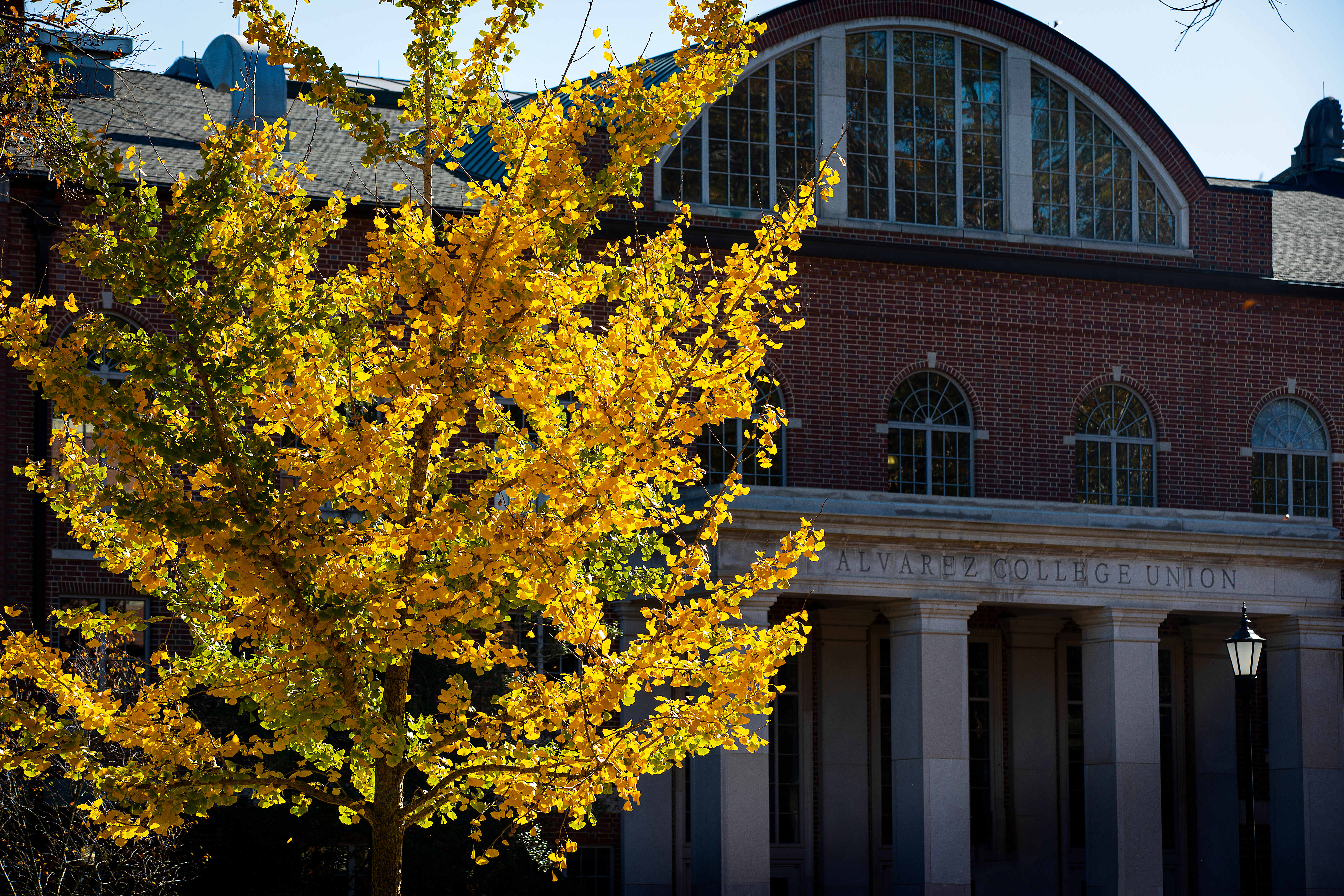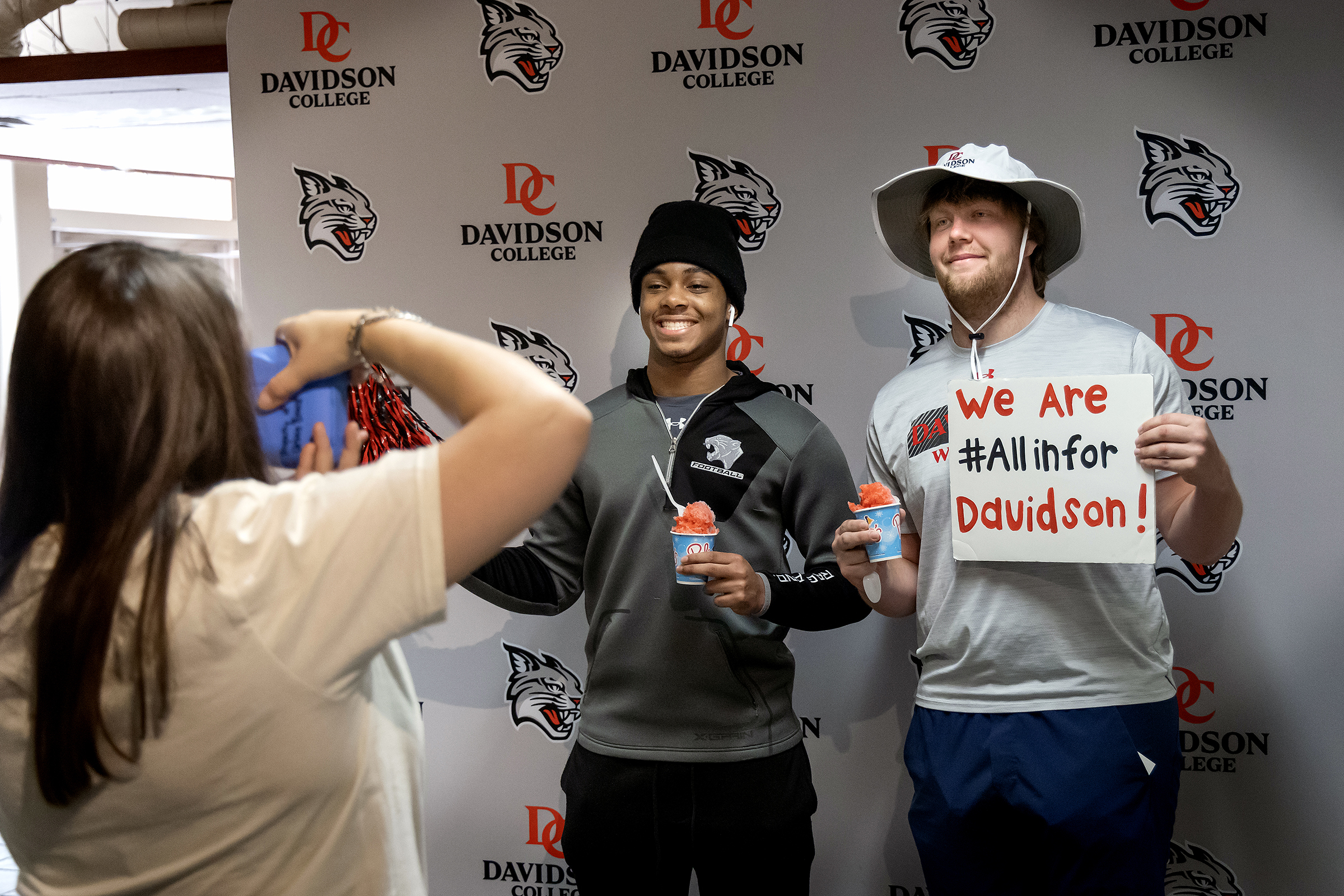Raise a Fist or Take A Knee: 50 Years After Iconic Olympic Medal Ceremony, Athlete Protest Still a Hot-button Issue
October 16, 2018
Fifty years ago on Oct. 16, 1968, Tommie Smith and John Carlos, gold- and bronze-medal winning sprinters in the 1968 Summer Olympics, made history. Standing on the medal podium, with the National Anthem playing, Smith and Carlos each raised one gloved fist (they only had one pair of gloves and had to share) as part of the Olympic Project for Human Rights, an offshoot of the civil rights movement. They made one of the most political statements of protest in the history of sports - and a truly iconic gesture.
We talked to Kevin Marinelli, visiting assistant professor of communication studies and expert in rhetoric, about Smith and Carlos' actions and how their raised fists remain relevant today.
What made Smith and Carlos' protest so effective?
The National Anthem is a highly symbolic ritual, so it makes sense to utilize this moment for symbolic protest. The Greeks called this Kairos-- waiting for the opportune moment to intervene. In the case of Smith and Carlos, the victory ceremony was supposed to transform their marginalized status as African Americans into celebrated American heroes. Smith and Carlos reject that transformation to highlight their oppression. The very moment Americans wish to see past race -- to remain colorblind -- Smith and Carlos force Americans to see their race first and foremost. Essentially, Smith and Carols tell their audience, ‘No, we're not going to give that to you. We want you to see our humanity. We want you to see us for who we are outside of this athletic context.' In turn, they compel the crowd to look inward as well.
What parallels do you see in their protest and the protests in the NFL that have made headlines over the past two years?
In both cases, we find athletes -- unlikely candidates for social activism according to many -- transform a hallowed moment of patriotic display into a moment of social protest, while still preserving its consecration.
Also in both cases, critics of the protest emphasize its timing and optics as their source of outrage. In other words, people criticize Kaepernick, just as they had Smith and Carlos, specifically because of how he's protesting -- during the anthem, in front of the flag. Critics of both protests also appear to demonstrate at least some level of support for the cause without supporting the protest itself.
This is a perennial response -- dare I say, counter-rhetorical strategy -- to the rhetoric of social protest. Institutional voices profess their support for a social cause while condemning the specific form of the protest. Conversely, advocates of social protest emphasize the importance of disruption -- recognizing that only alarming gestures such as these gain traction in the news media. Further, protestors often resort to such tactics only after being excluded from more traditional forms of communication and public advocacy. One might argue that had the judicial system more adequately addressed issues of racial inequality that encompassed the deaths of Trayvon Martin, Eric Garner and Michael Brown, etc., the need for social protest would not have presented itself.
There has also been a transformation in the stands. After 9/11, the anthem became more of a sacred moment. And today, in the midst of player protests on the field, there's an extra dimension of solemnity -- perhaps, sanctimony -- that didn't present itself before. The entire ritual is rife with performativity, which is not to say falsity, but merely a hyper-consciousness that appears different than before.
So, 50 years after Smith and Carlos, do you think Americans' perceptions of protests have changed?
Perhaps, but not entirely. Our perceptions of issues change, but our perception of protest remains uneasy, because protest always bucks the status quo.
Today, we look back and we celebrate Smith and Carlos because we can agree overwhelmingly on what they were protesting. But people were not ready to hear those sentiments at the time, and certainly not in that context. The same goes for today. Perhaps 50 years from now, people will look back at Kaepernick's protest against institutional racism as an obvious and necessary move to shed light on an important issue. But that's not how the majority of people see it today, just as it was not how people saw Smith and Carlos' protest then.
An interesting distinction between the protests is that Smith and Carlos had a one-shot deal, whereas Kaepernick engaged in a recurring demonstration. Thus Kaepernick was able to facilitate a spirited public dialogue over issues pertaining to race, along with the merits and functions of protest itself. It was quite interesting to witness it evolve, to see Kaepernick negotiate his demonstration in light of a myriad of competing perspectives.
Concerning Smith and Carlos, you heard a lot of the same arguments you hear today: The athletes are spoiled and should simply be happy to be where they are. In 1968, President Lyndon Johnson had just passed the enormous civil rights legislation and so, technically, the civil rights movement had just hit a major milestone. So there was very much the same kind of talk we hear today, that Smith and Carlos were ungrateful -- that they should be happy with what the civil rights movement had achieved. Sadly, it seems that argument has not changed much in 50 years. More optimistically, however, the debate has also become more sensitive and sophisticated in many ways. So in that sense, I do think it is fair to say the public perception of social protest has softened some. That said, it also compels activists to perpetually seek ever-more-disruptive modes of demonstration to reinvigorate their causes and sustain public consciousness.
One thing we didn't see 50 years ago was Smith and Carlos becoming brand spokespeople. Colin Kaepernick, on the other hand, recently led a campaign for Nike that timed to the start of the 2018-19 NFL season. How do you interpret that?
Nike's corporate sponsorship of Kaepernick is fascinating. People on both the left and the right appear troubled by it. On the left, many hate to see Kaepernick's social protest appropriated by a global corporation that embodies capitalist decadence and is mired in allegations of human rights abuses. On the right, people hate to see Kaepernick's protest embraced by mainstream consumer culture. On both sides, people appear alarmed by Nike's attempt to soften and transform the protest into just another sterile gesture, the visual equivalent of "Just Do It."
In a way, Nike's sponsorship of Kaepernick poignantly symbolizes the confluence of public and consumer culture today. Brand marketing grows increasingly public, while public advocacy grows increasingly conscious of consumer identities. Public advocates consult with marketers to identify their "brand," while brands market their products as engines of social change. We're operating in a quite different cultural space than that of the 1960s, in which the boundaries between private and public appeared relatively stable. That's one important difference shaping the public receptions of the respective protests of Smith and Carlos, and Kaepernick and others.
At the end of the day, the public reception and ultimate impact of social protest remains wildly unpredictable. Each utterance changes its political landscape. Further, our discursive environment is saturated with many more voices, platforms of expression, and cultural nuances than that of 1968. Today, once a symbolic gesture begins to circulate in public space, it takes on a life of its own. It's really unpredictable the reactions it will spark and the conversations, debates and counter-protests it might engender.
Jay Pfeifer
japfeifer@davidson.edu
704-894-2920



